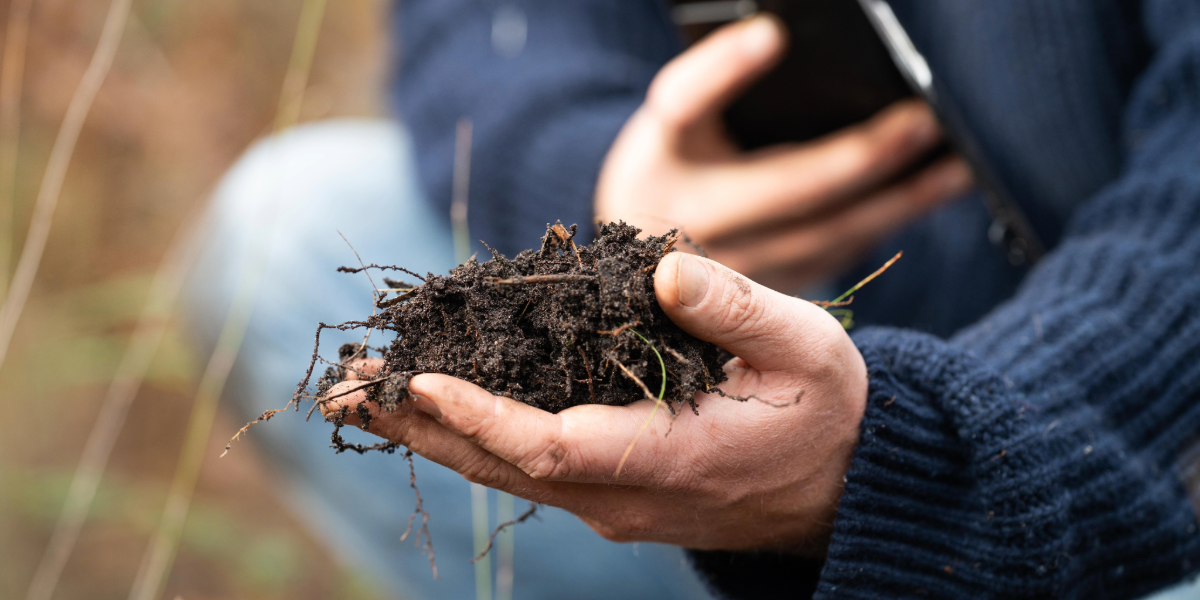Canola, wheat and barley growers are being invited to find out how they can make more money and help the climate at the same time with the help of fungi.
Loam Bio is an Australian company that works at the intersection of agriculture and microbial science. Built by farmers for farmers, the company works to address the problem of too much carbon in the atmosphere and not enough in soils. The product they have developed, called CarbonBuilder, is a carbon-fixing microbial furrow treatment for wheat, barley, and canola crops. Or in more common parlance, tiny mushrooms that are added at the point of sowing which captures carbon dioxide from the crop as it grows.
Guy Webb, Loam Bio’s Head of Global Agronomy & Co-founder, says if you can grow a crop you can also get involved in carbon sequestration.
“Any farmer that can grow a crop can get involved,” he said.
“The beauty of it is that there’s not a lot of practice change involved.”
“It’s as simple as putting the fungus spool with the seed at sowing, and the fungus does the rest of the work for you.”
“If you’re a farmer that is doing a good job and can grow an economic amount of grain in the district that they’re growing the grain in, then there’s potential for carbon sequestration to happen using this technology.”
The root associated fungi in CarbonBuilder lives around the root of the plant and does the work of carbon sequestration by absorbing carbon dioxide and converting it into stable forms of carbon. The simple yet clever process and science provides an elegant solution that is easy for farmers to embrace carbon farming, helping the climate while improving their soils, their crops, and their bottom line.
“We’re taking what is an invisible, odourless gas, carbon dioxide, out of the soil, turning it into plant sugars through photosynthesis, growing a plant, and then the bit of carbon that leaks out the plant roots, that’s where the fungus comes into play and catches that carbon.”
“The carbon that comes out of the roots of those plants can be quite significant, and the fungus uses that carbon flow from the plant that’s going from the plant to the soil and converts it into really stable forms of soil carbon,” Mr Webb said.
“Whereas normal that normally that sort of carbon that leaks off plant roots gets chewed up by bacteria and respired and turned back into carbon dioxide and leaks back out of the soil.”
“So we’re just putting an organism that traps that carbon in situ, and prevents carbon dioxide from going in to the atmosphere,” he said.
The carbon sequestration technology has been tested across the country, including in the Liverpool Plains, and the results show that there’s a benefit to the crop as well as the environment. It is now in its second year of commercialisation. Mr Webb said they made certain the fungi chosen ticked all the boxes.
“It’s got to give a yield boost to the crops, and it’s got to give a carbon boost to the soil, otherwise it doesn’t go forward in the in the program,” Mr Webb said.
“First rule, like in medicine, do no harm. So if you can give a yield bump, you know that that must be good for the plant, then obviously it’s got to give a carbon sequestration outcome as well.”
Research by Western Sydney University published in March found the fungi delivered a 9.4% higher level of carbon in soil, and real world testing in the paddock as delivered yield bumps of up to 5-6t/ha.
Following successful events in Moree, Pallamallawa, Narrabri and Garah earlier this month, Loam Bio is holding two information sessions next week in Gunnedah and Spring Ridge. The sessions will explain how building soil carbon can benefit your farm and bottom line, learn about Carbon Builder, and help determine a soil carbon project suits your operation.
The sessions are being held on:
- Tues 16th July – Gunnedah, NSW: https://events.humanitix.com/gunnedah-carbon-farming-separating-fact-from-fiction?hxchl=hex-pfl
- Wed 17th July – Spring Ridge: https://events.humanitix.com/spring-ridge-carbon-farming-separating-fact-from-fiction?hxchl=hex-pfl
For more information visit Loam Bio’s website.
Like what you’re reading? Support New England Times by making a small contribution today and help us keep delivering local news paywall-free. Support now


